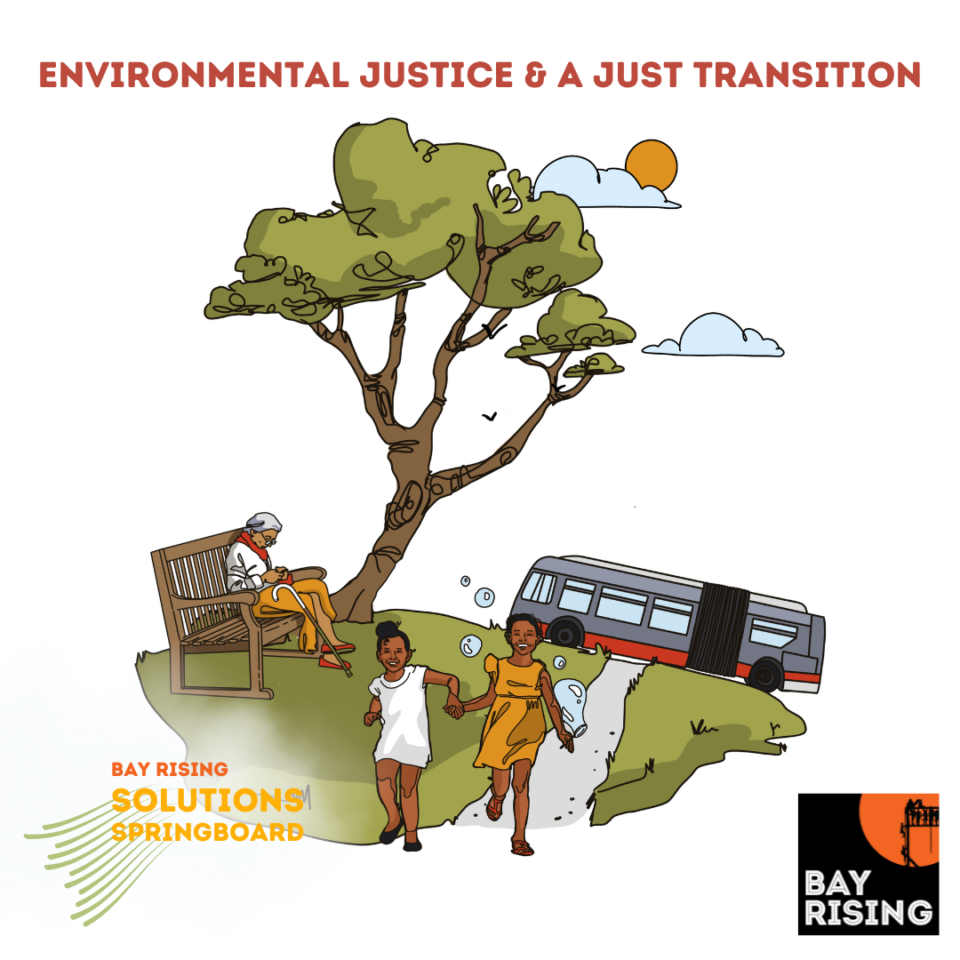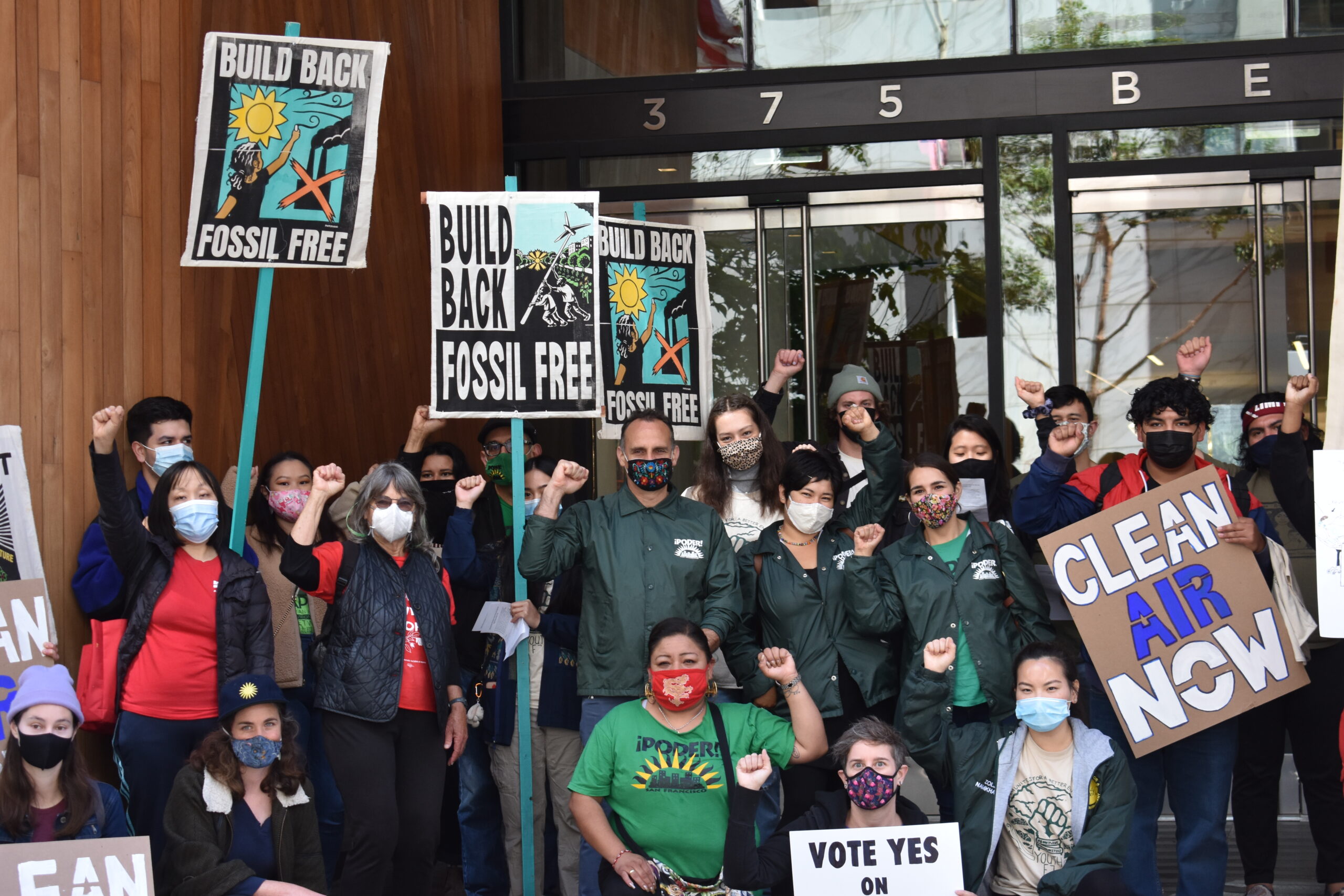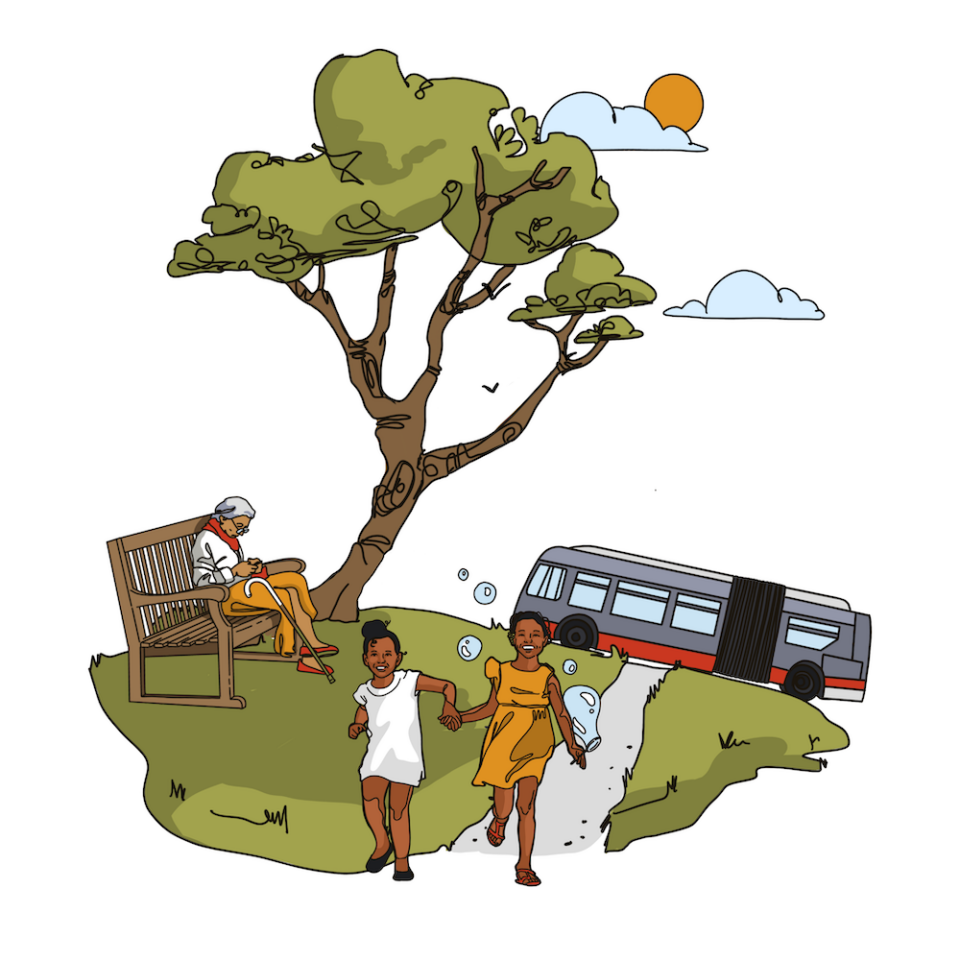All people have the right to a clean and healthy environment in which our communities can live, work, learn, play, and thrive.
As CEOs profit from pollution and the escalating climate crisis – both of which disproportionately affect Black, Latino, Native, Asian, and working-class communities – our survival lies in community-rooted solutions that shift us towards harmony with the earth and with each other. Big polluters and CEOs who want to extract, exploit, and grow at any cost have already poisoned our air and water, intensified extreme weather events, and led to higher prices for basic necessities like food, housing, water, and energy – and some of California’s biggest polluters are located in the Bay Area. This situation cannot last; our planet can no longer sustain it and our people will no longer tolerate it.

That’s why working-class communities of color living alongside big polluters in Oakland and Contra Costa County are leading a just transition away from an economy that extracts life from our people and planet to a regenerative economy where life flourishes. We can’t wait for Washington; we need to take our own Green New Deal approach right here in California and the Bay Area. A Green New Deal means taking bold, inclusive steps to divest from a fossil fuel economy that is destroying our health and environment. It means phasing out oil and gas production. It means saying no to multibillion-dollar bailouts for investor-owned utilities and skyrocketing electric bills for the rest of us. In addition to ending bad things, a Green New Deal means building new ways to power our neighborhoods that ensure safety; bring good, green jobs; and stabilize the climate. Most importantly, we must put decision-making power back in the hands of working people and local communities – and take power away from corporations that put profits over safety.
Orange denotes Bay Rising member organizations. Green denotes partner organizations. Click on the circles to visit each organization’s website.




Asian Pacific Environmental Network organizing in Richmond
People Organizing to Demand Environmental and Economic Justice (PODER) at the grand opening of Hummingbird Farm
PODER – Hummingbird Farm Grand Opening! from The Praxis Project on Vimeo.

Photo credits, top to bottom: Asian Pacific Environmental Network (APEN), Communities for a Better Environment, People Organizing to Demand Environmental and Economic Justice (PODER) / Hummingbird Farm Master Plan, People Organizing to Demand Environmental and Economic Justice (PODER) / Hummingbird Farm Master Plan.